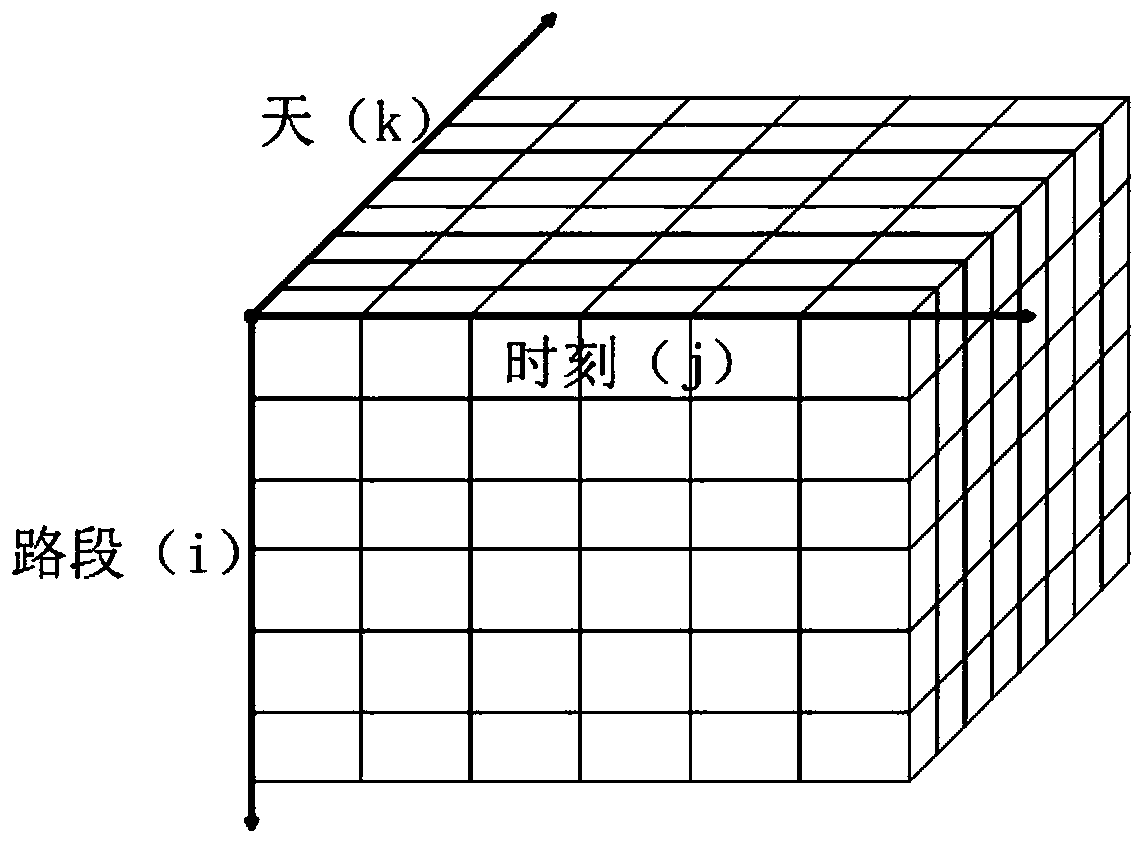Traffic data tensor filling method based on spatiotemporal constraints
A technology of traffic data and filling method, which is applied in complex mathematical operations and other directions, and can solve problems such as high data loss rate, lack of traffic information, and instability.
- Summary
- Abstract
- Description
- Claims
- Application Information
AI Technical Summary
Problems solved by technology
Method used
Image
Examples
Embodiment Construction
[0039] The technical solution of the present invention will be specifically described below in conjunction with the accompanying drawings.
[0040] The present invention proposes a traffic data tensor filling method based on space-time constraints, such as figure 1 As shown, the specific steps are as follows:
[0041] Step S1: Obtain incomplete traffic data and create a traffic flow data tensor;
[0042] In this embodiment, by interacting with the GPS of the vehicle, the GPS data of the detected vehicle is processed, and the average road speed data of i interconnected road sections in the area to be recovered for k days is obtained. Divide a day into j moments at equal intervals, and construct a traffic data tensor of size i×j×k Such as figure 2 shown. Incomplete tensor observed and the complete tensor to be recovered It can be represented by the following formula:
[0043]
[0044] Among them, P Ω ( ) represents a linear map, Ω is the observed subset of traffi...
PUM
 Login to View More
Login to View More Abstract
Description
Claims
Application Information
 Login to View More
Login to View More - R&D
- Intellectual Property
- Life Sciences
- Materials
- Tech Scout
- Unparalleled Data Quality
- Higher Quality Content
- 60% Fewer Hallucinations
Browse by: Latest US Patents, China's latest patents, Technical Efficacy Thesaurus, Application Domain, Technology Topic, Popular Technical Reports.
© 2025 PatSnap. All rights reserved.Legal|Privacy policy|Modern Slavery Act Transparency Statement|Sitemap|About US| Contact US: help@patsnap.com



